TRANSITIONING TO A HYBRID WORKFORCE IN LIFE SCIENCES
As we begin to re-enter a normalized version of the past 16 months, the transition from fully remote workforces to new working environments is nearly upon us. I have heard everything from Life Sciences companies remaining fully remote, to exploring a hybrid workforce model, to requiring employees and teams to return to the office. As companies begin this transition, I wanted to take a deeper look at the way remote work has impacted you and the challenges that companies must consider and prepare for when moving toward a hybrid workforce.
HOW WORKING FULLY REMOTE IMPACTED EXECUTIVE SEARCH
At McDermott + Bull, this past year has been one of our busiest and most successful years in Life Sciences. As we enter into Q3 we have surpassed last year’s total placements and closed 56% more searches compared to 2020.
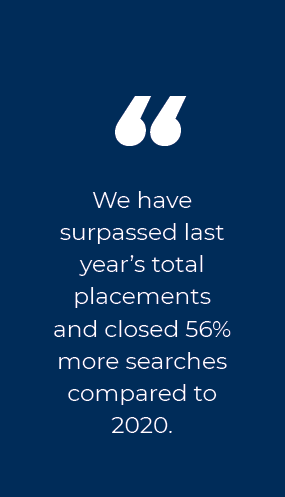

Without being able to physically meet, the majority of our clients shifted their focus to attracting and hiring senior executive talent virtually and my team and I were able to source, screen, interview, assess, and help our clients onboard all of their candidates virtually. In 2020, the remote workforce opened up a new talent pool for many Life Sciences companies, allowing them to access more qualified or specialized experts within their field, regardless of location.
From 2020 to 2021, we saw substantial numbers of talent leaving the workforce. Whether these were baby boomers retiring or younger parents leaving the workforce to become a full-time caregiver. As a result, we find ourselves in a candidate’s market. To combat the shortage of talent in comparison to available positions within the Life Sciences sector and attract top talent, I’ve seen:
Increased counter offers
The return of signing bonuses
More flexibility around in-office and virtual work arrangements
More competitive benefits and rewards
WHAT TO PREPARE FOR WITH A HYBRID WORKFORCE
As I continue to partner on searches with Life Sciences companies, the general consensus is split between requiring employees to return to the office or remain partially virtual. An important element is the question of competitiveness. Will companies who return to traditional models be better able to serve customers and patients than companies who retain a
hybrid-based model? Regardless of what a company decides, the transition to a hybrid workforce will give rise to difficult conversations for both attracting top talent and retaining existing teams. Below are a few elements that all companies will need to carefully consider when reopening the office and encouraging teams to participate in a hybrid workforce model.
SAFETY + WELL-BEING

Safety will be critically important to making employees and teams feel comfortable in negotiated environments and spaces, such as the workplace. From limiting in-person headcounts throughout the workspace to maintaining a new standard of cleanliness, these commitments will need to be rolled out and communicated efficiently to teams from the top down. New programs and benefits designed to promote balance and support mental health across the organization for returning employees will be critical to a successful transition.
A fully remote work environment has provided new freedoms to many employees. Life Sciences companies’ physical workspaces and cultural values will need to shift and become more flexible to accommodate dynamic schedules, work-life balance, personal appointments, commitments, and more. This can be anything from offering two to three remote work days, designating new physical workspaces in the office for a specific purpose, or even offering a four-day work week.
FLEXIBILITY

RETAINING REMOTE TALENT

Not surprisingly, the idea of “indefinite remote working” back in 2020 motivated a lot of talent to disperse across the country in search of more space, better weather, and stronger support networks. Now, as Life Sciences companies implement hybrid workforces, leadership and talent management teams find themselves at a compensation crossroads. For the employees that moved away, they likely kept their existing salary and some are threatening to resign if mandated to move back. As these conversations begin to arise, HR leaders will be faced with reevaluating the cost (salary) versus the value (work) an employee brings to the table both pre- and post- remote working. With the fight for the best talent remaining so competitive, companies cannot afford to lose key players and leaders, so they will need to get creative in negotiations to bring long-distance talent back to the workplace.
With some teams and leaders feeling apprehensive about returning to a hybrid workforce, and vaccination rates determining in-person eligibility, Life Sciences companies can leverage credits and offsets for both local and long-distance talent. These can include commuter incentives, home internet utility credits, or even carbon offset credits. With state governments mandating reduced carbon footprints, the potential of allowing large portions of the workforce to remain remote may be able to contribute to these corporate social responsibility initiatives.
CREDITS AND OFFSETS

REIMAGINING YOUR CULTURE
There is no doubt that remote employees will feel a loss of freedom when returning to a hybrid work environment after enjoying the flexibility and comfort of working from home. At home, studies by McKinsey and others have shown most leaders remained as productive as if they were in the office, however, new habits, behaviors, and routines arose to dictate working hours, team socialization, breaks, and more. As a result, Life Sciences companies will need to re-engineer the company culture to blend the “in-home” culture of flexibility with the “in-office” culture of collaboration and socialization. In some cases, tech companies have created the role of a Chief Remote Officer (CRO) to address how to best structure a hybrid workforce and help HR leaders integrate these two distinct cultures into companies’ mission and values.
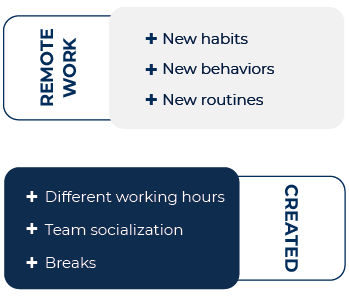
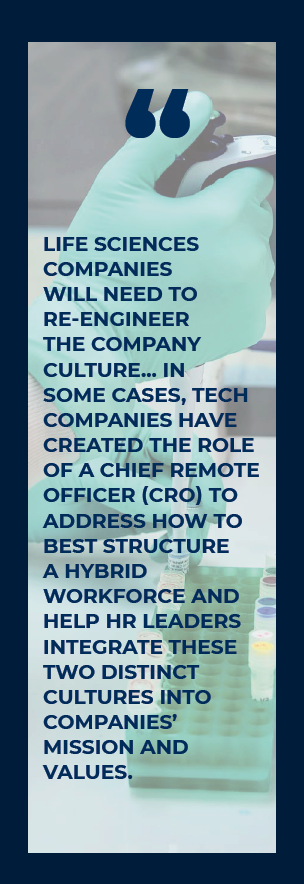
LESSONS FOR THE FUTURE HYBRID WORKFORCE
On a more personal note, there are some things I would like to see stay after the pandemic subsides. It has been a tense, confusing, and eye-opening 16 months for us all, but I do believe there are some unexpected opportunities and positive outcomes that have arisen from this experience both personally and professionally.
For example, the widespread acceptance of videoconferencing proved to enhance my productivity, lower my commute time, and allow me more time with more senior executives who might not normally have taken the time for an in-person meeting. I became a lot more skilled at Zoom and other virtual meeting platforms. I’m by no means a master, but I no
longer have to ask my kids to help change my virtual background, find where a recording is saved, or worry about phantom cat filters appearing mid-Zoom. As a resident of Southern California, I am a huge fan of the increased opportunities for open-air dining as well!
For the first time in more than twenty years, California saw more people moving out of the state than moving in. In my eyes, the great migration that remote working allowed for began an equalization of geography and talent. Larger cities and metropolitan areas were able to breathe a sigh of relief and make space for new talent to move in.
I’ve been talking to a lot of my clients and senior executives in Life Sciences about what the new workforce will look like. From these conversations, leaders and employees seem to be equally spread in favor of fully remote work, fully in-office work, and a hybrid model of both. The majority of the workforce leans toward a hybrid model, and I hope it will make alternative workweek schedules (9/80 or 4/10) more common and give us some more balance in our lives.
I’m not going to lie — working from home 100% of the time with my wife, five children, and three dogs all in the house was absolutely a challenge, but it also taught me to be more present with my kids and find more balance between my personal and work life. Many companies, including McDermott + Bull, adapted to become much more compassionate, flexible, and understanding of personal duties and responsibilities outside of the workplace. As long as the searches were completed, milestones reached, client expectations were met, and the work got done — that was all that mattered. A renewed trust was placed on the workforce and I hope that this employee-employer dynamic and relationship is here to stay.
I’ve been talking to a lot of my clients and senior executives in Life Sciences about what the new workforce will look like. From these conversations, leaders and employees seem to be equally spread in favor of fully remote work, fully in-office work, and a hybrid model of both. The majority of the workforce leans toward a hybrid model, and I hope it will make alternative workweek schedules (9/80 or 4/10) more common and give us some more balance in our lives.
One of the things I thought I would have missed the most when we started to work remotely was business travel. While I have missed meeting my candidates and clients in-person, I have not missed the lost time that comes with traveling for interviews and client meetings. For me, cutting out work trips, travel, and commuting gave
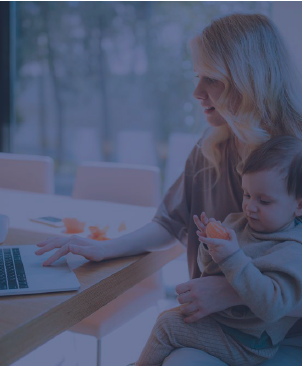
me back so much time to spend with my family.
The other day as I was walking back into the office at McDermott + Bull, I was thinking about how my relationship with some of my older kids would be different if I had the ability to work in a hybrid environment in my earlier career. I wouldn’t have seen as much of the world, but I could have gone to more soccer games, recitals, school plays, and field trips. I believe that one of the greatest positives the pandemic taught us was the importance of balance, compassion, and presence. My hope is that a hybrid workforce will give professionals who are parents or caregivers the freedom to be more present in life outside of work.
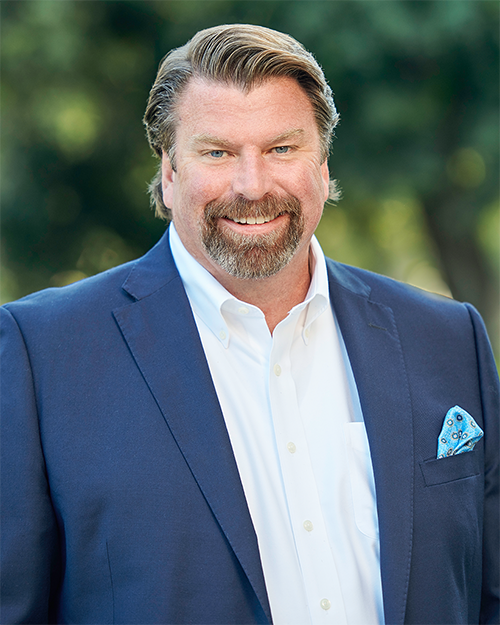
ABOUT THE AUTHOR
Jake Vander Zanden
Managing Director
jake@mbexec.com
He serves as a Managing Director and leader of McDermott + Bull’s Technology Life Sciences Practice. He has spent over 25 years as a turnaround and growth leader completing business transformations as a senior executive at companies like Allergan, Medtronic, and more. He is an expert-in-residence at Applied Innovation and an MBA mentor for the Paul Merage School of Business, both at the University of California Irvine. He earned his Bachelor of Arts degree in marketing and management from St. Thomas University in St. Paul, Minnesota.


